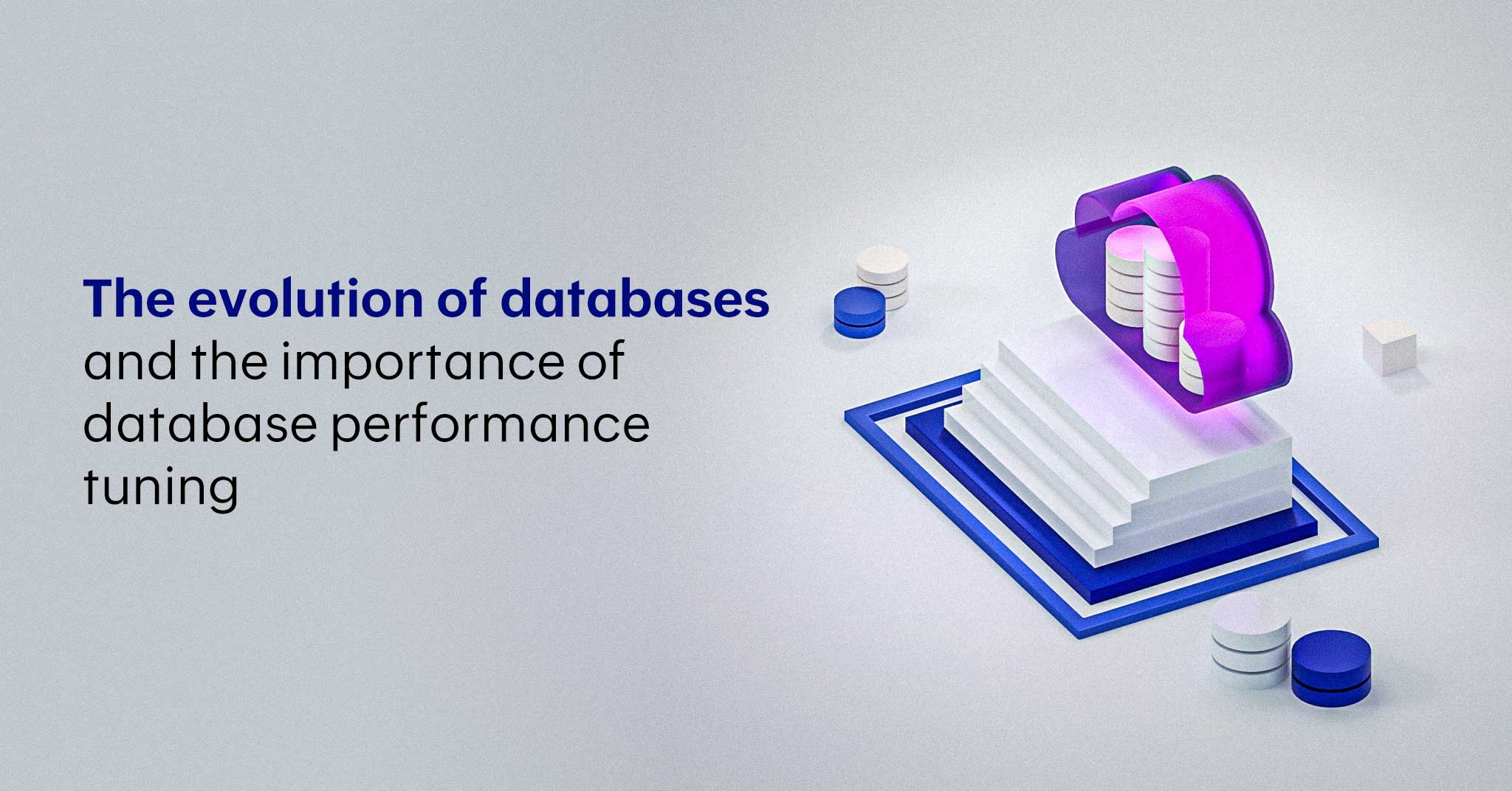Database optimization, Part 1: Database performance tuning in the cloud era

Every click and scroll relies on fast, reliable data. The topic of data is incomplete without databases, which leads us to the next crucial topic: database performance tuning. The shift to cloud computing combined with the rise of diverse database types (SQL, NoSQL, and cloud-native databases) have brought new challenges and new ways to keep things running smoothly.
This two-part blog series is all about fine-tuning your databases to meet the demands of today’s applications.
In part one of this series about the importance of enhancing and optimizing database performance, we will discuss approaches relevant to SQL, NoSQL, and cloud database systems, with a special emphasis on tools and strategies for contemporary applications.
In part two, we will explore methods to enhance query efficiency and effectively manage resources in your databases.
Let's get to it! To begin with, it's important to know how databases have evolved over time to delve into the challenges and strategies for tuning database performance
Traditional database models
Databases are systematic collections of a vast amount of structured data. They are specifically used to make information more accurate, reliable, and easy to use. Traditional SQL databases, also known as relational databases, are similar to spreadsheets in that they store data in a structured format with tables to organize information effectively. Other traditional databases include Microsoft SQL Server, MySQL, and Oracle Database.
SQL databases continue to be recognized as the backbone of numerous applications in use today. SQL databases are well-suited for transactional applications that require high data accuracy and reliability. They adhere to the principles of atomicity, consistency, isolation, and durability to maintain data integrity. However, as they lack flexibility, there was a demand for database innovation to meet changing needs.
The gentle shift: NoSQL databases
Thus, there was a shift. NoSQL databases emerged to address flexibility needs, offering non-relational structures and flexible schemas. NoSQL databases handle unstructured data well, making them ideal for applications like social media and the Internet of Things. They are designed to scale horizontally (unlike SQL databases, which generally scale vertically). This shift wasn't just a trend but a response to the changing nature of data and growing demands for scalability and flexibility.
The era of cloud computing
The emergence of cloud computing led to the development of Database as a Service (DBaaS). In this model, the cloud service providers govern and manage the infrastructure. This frees up companies to concentrate only on utilizing the database instead of taking care of its management.
Some of the most popular cloud databases are Amazon Relational Database Service, Azure SQL Database, and Google Cloud SQL. They provide benefits such as automated backups, disaster recovery, reliability, and maximum availability because your databases are distributed across multiple regions of the world. They also offer flexibility in handling big data. Nevertheless, when using DBaaS, it's important to consider the constraints on hardware and configurations that may limit tuning and optimization.
The database market
The global database market grew 12.8% last year, reaching an annual value of approximately $102 billion, according Gartner®. Most of this expansion is occurring in cloud computing.
Also, according to Gartner's latest forecast, worldwide end-user spending on public cloud services is projected to increase 20.4% in 2024, reaching a total of $675.4 billion. This marks substantial growth from the $561 billion total in 2023. The driving force behind this is the rapid adoption of generative AI and application modernization, which are revolutionizing the way businesses operate in the cloud.
Organizations are increasingly embracing cloud databases for their flexibility, scalability, and reduced need for on-premises infrastructure. There is a trend towards serverless models, container databases, multi-cloud setups, and hybrid cloud setups, which requires us to adjust our performance optimization methods for the cloud era. Observability becomes crucial in this scenario as we can't directly manage database hardware.
The complexity of modern applications
In recent times, multiple databases are used in a single application when it adopts the microservices architecture. This provides the flexibility to use the best-suited database or a combination of databases for the best functioning. For example, your business may require you to use a traditional SQL database for transactional data, a NoSQL database for unstructured data, or both.
The microservices architecture is robust, resilient, scalable, and efficient; however, it requires diligent management and fine-tuning to prevent bottlenecks and maintain consistent performance across services. Whichever database you choose, management and maintenance are very demanding and critical because even a slight compromise can impact the overall user experience and your business as a whole.
The key: Database performance tuning
The key to successful IT management is consistently maintaining and tuning your databases for improved performance. Database performance tuning involves optimizing your databases to operate effectively, thereby decreasing response times, minimizing resource consumption, and maintaining reliable performance as data and traffic increase. Performance problems in databases can rapidly worsen, affecting user satisfaction, application efficiency, and potentially even business profits.
You may be wondering if there is a way to avoid such challenges. Yes, there is. Through proactive tuning and optimizing, we can avoid these issues and improve the speed and reliability of our systems.
Now we are getting deeper. Read part two of this blog series to learn about the techniques and strategies to tune your database performance for high availability and reliability.
Try Site24x7's fully fledged database observability solution, which offers complete visibility into your databases! |
Topic Participants
Grace Nalini